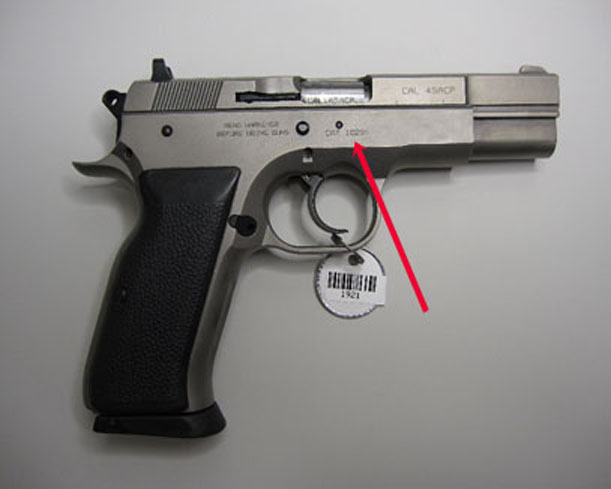Validation and Evaluation of Magneto-Optical Imaging Technology for Recovering Obliterated Serial Numbers in Firearms
Forensic Technology Center of Excellence
National Institute of Justice
Introduction
The Gun Control Act of 1968 requires that all newly manufactured firearms produced and imported in the United States bear a serial number. The number must be placed on the frame or receiver and contain a sequence of letters and/or numbers that uniquely identify the firearm. The number must be engraved, cast, or stamped on the firearm in print size no smaller than 1/16 inch and to a minimum depth of 0.003 inch. Stamping, laser etching, and dot/peen marking are the most commonly used serial number application techniques.
When a serial number impression device imprints the identification number, the crystalline structure of the metal is deformed and compacted a short distance beneath the identification number. Two deformation zones result from the impression process: plastic and elastic. The plastic deformation zone is permanent, while the elastic zone is not. If the zone of plastic deformation is still present after a serial number alteration or obliteration (Figure 1), it is possible to detect and visualize the serial number. Recovery of an obliterated serial number greatly depends on the material used in the manufacturing of the firearm and the depth of the obliteration.

Figure 1. Tanfoglio Witness pistol with dot pin-applied, and grinding and sanding removed, serial number.
A number of techniques are currently available to recover erased markings in firearms (Klees, 2009). The most commonly used are chemical etching and magnetic particle inspection (MPI). As the discovery of more effective methods is of interest to firearm examiners, an assessment of the technical and nontechnical performance capabilities of magneto-optical (MO) sensor technology was conducted. In Phase I, utilizing stock bar samples, it was found that the MO sensor technology is capable of detecting and visualizing obliterated serial numbers nondestructively and in real time. It was also found that sensor usage was limited to ferrous and paramagnetic metals, and that for the sensor to be successful it requires direct contact between the sensor and the metal (Luyendijk, 2014).
In an effort to validate these findings, a Phase II project was initiated to recover erased markings in actual firearms. MPI was included as the other obliterated serial recovery method to obtain data from the same samples and to compare results. This document reports on the outcome of the Phase II test and evaluation.

